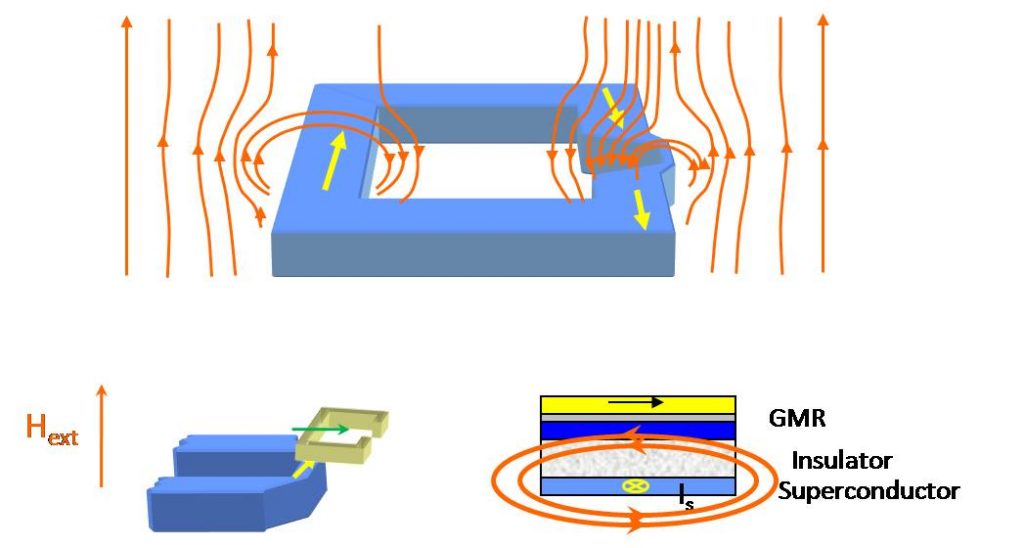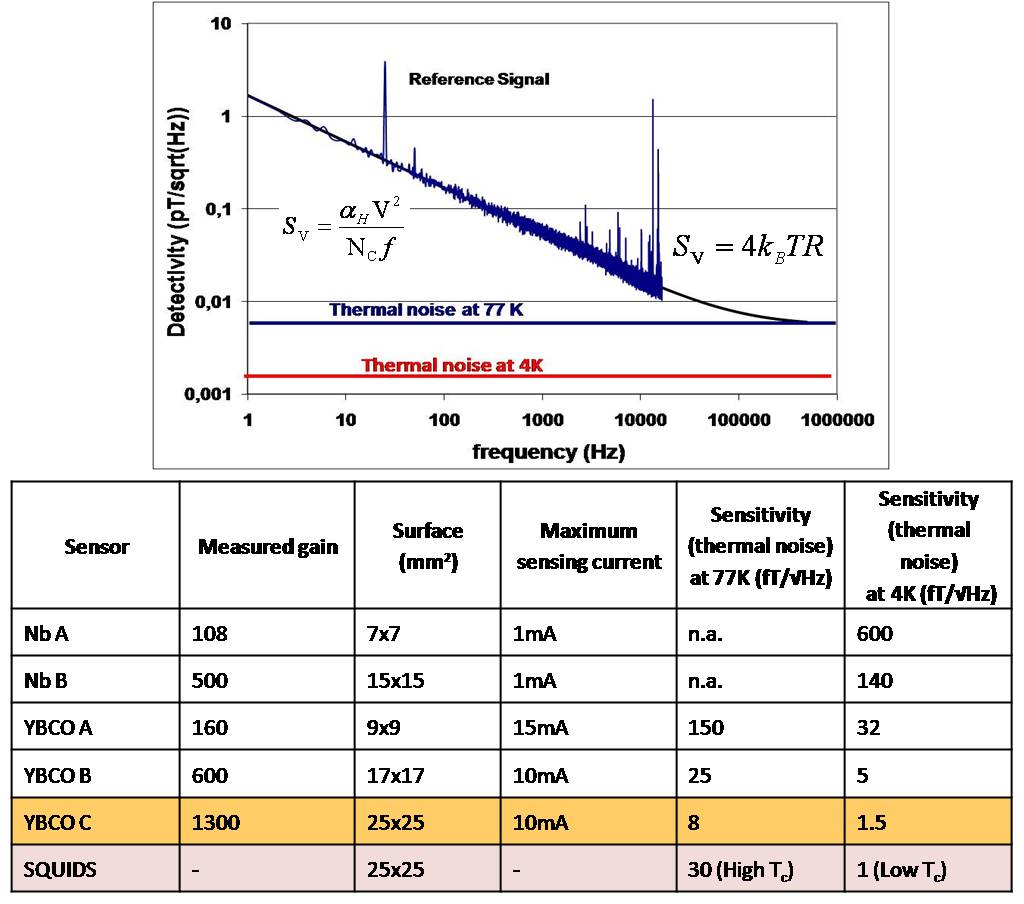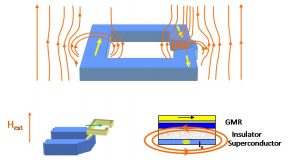Measurements of very weak field (down to the femtotesla range) have been mainly addressed by low-Tc SQUIDS. We have proposed in 2004 the principle of a new sensor, based on spin-electronics, to offer extremely good sensitivity for measurements of magnetic fields over a wide range of frequency (dc to hundreds of MHz).
These sensors, called mixed sensors, are based on the association of a sensitive field sensor (Giant Magnetoresistance or Tunnel Magnetoresistance) and of an efficient flux-to-field transformer. The transformer is a cm size superconducting loop containg a micron size constriction. When an external field is applied perpendicular to the loop, a supercurrent is generated, to prevent the entrance of the field in the loop. This supercurrent reaches a very high density when passing through the constriction. The stray field lines due to this current can be locally hundreds to thousands times larger than the applied field. If one locates a GMR or TMR element on top or below the constriction, it will collect this locally enhanced field lines and a change in the resistance of the GMR (TMR) element can be measured (see Figure 1).
This device is fully made out of thin film technology, and can be either using a low-Tc (typically Nb) loop or a High-Tc (YBaCuO) loop. In the first case, liquid helium cooling is required whereas in the second one only nitrogen cooling is necessary.

The detectivity (minimum field which can be detected in a 1Hz frequency bandwidth) can be estimated and measured from the noise spectral density of the sensor. Figure 2 shows a typical response as recorded in the magnetically shielded room at Neurospin, for low frequency range, together with a table giving performances of various sensors (with Nb and YBCO loops) in the thermal noise. One observes that the best sensors produced so far in our lab (gain 1300) exhibits detectivities of few femtotesla at 4K and 77K, being better than high-Tc SQUIDS at liquid nitrogen, and comparable to low -Tc SQUIDS performances at 4K and in the thermal noise regime.
At lower frequencies, the 1/f component of the noise in the GMR element limits the performances. Modulation techniques can help reducing this noise.
These sensors are very good candidates to measure biomagnetic signals, like those produced by the electrical current in the heart (magnetocardiography) or in the brain by the neuronal currents, and can also be used for very low field Magnetic Resonance Imaging.
Contact: Myriam PANNETIER-LECOEUR





